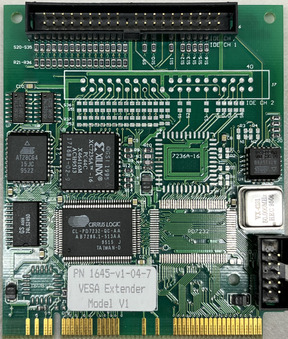rasz_pl wrote on 2024-04-12, 12:07:
pshipkov wrote on 2024-04-12, 03:26:
With screechy ancient HDDs the caching controllers make much more sense.
Imo those only made sense when there was no other way of adding normal ram into the computer. Smartdrive started shipping in late 1988.
IN 1988, 3600RPM HDDs that sounded like marbles in a mason jar were used on computers with ISA controllers . There was some I/O headroom left in the ISA bus at that point, but it ran out pretty soon. I think it ran out for me when I bought a 17ms WD Caviar 280 drive. The new high tech drive sounded like ball bearings in a baby food jar (woah! The future!) and felt a lot faster than the 30ms clunkers that ruled the previous year. Pretty much all my extended memory went to smartdrv at the time while in DOS. Smartdrv cache was way faster than cache hanging off the ISA bus could have been since I had a 20Mhz CPU. Anyway, I don't think I experienced an I/O jump like I got from that WD drive until I put a 10ms 5400 rpm quantum fireball drive on a PCI bus years later. That was for a number of reasons.
When I entered the VLB age in 1993, my video performance was so much faster, but I remember not seeing much of a change in storage. Why wasn't it any faster? Was it my 2 year old 200MB maxtor drive? Was it the cheap controller? Was it the Award INT13H handler? Probably all of those things. I had to dig through usenet to find hardware tips and PIO-4 was something I read about in Computer Shopper that might show up next year. Adding a weird IDE driver from rando-BBS was a risk . It might corrupt your drive. It was my only computer and I was writing software on it and my only backups were on floppy. Catastrophic failure was a possibility. The only two certainties about adding an IDE device driver to my config.sys were that 1) I was going to lose a UMB and 2) DOOM wasn't going to play any better. There were so many clear bottlenecks that needed $$$ to be addressed before worrying about the storage subsystem. And why get a new hard drive if I had enough space? That drive cost me $600 in 1991 and it was still big enough for DOS & OS/2. Real world performance limitations on hard drives could be mitigated by adding another SIMM. OS/2 wanted another 8MB anyway....
But today, with the benefit of hindsight, cheap high speed storage, and if you are patient, a wide variety of VLB controllers available on ebay at a fraction of their inflation adjusted 1994 prices , I'm enjoying looking for the storage combinations that could have worked better back in the day.


